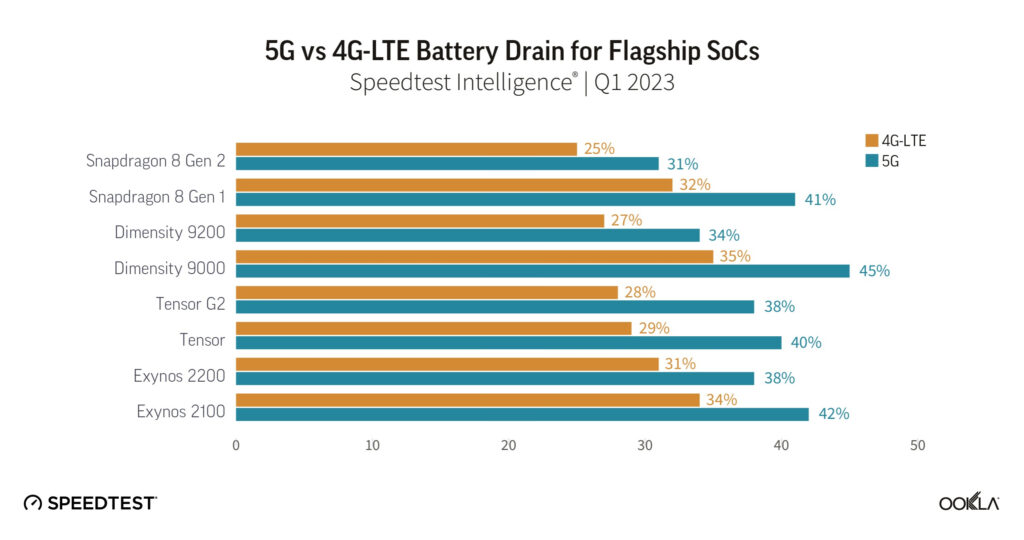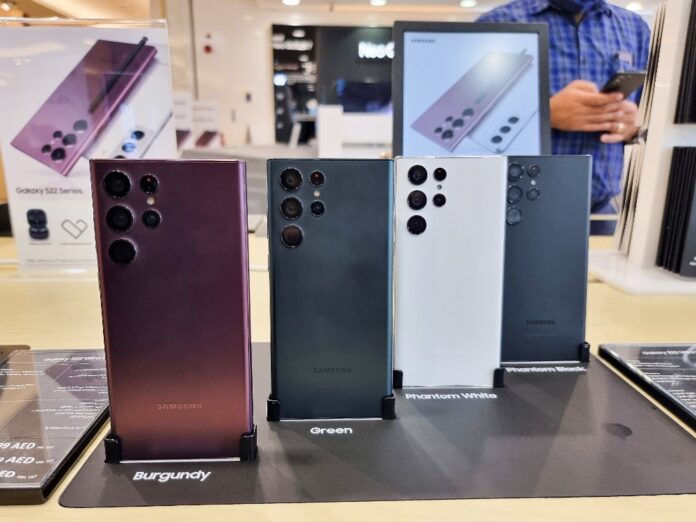Vendors, chipset manufacturers and operators reckon they can mitigate it in the network and the handset
Smartphone users accessing 5G networks experience higher battery drain than for those using 4G-LTE, of between 6% and 11%, depending on the System on Chip (SoC) in their device, according to Ookla.
Newer flagship SoCs demonstrate clear improvements in battery performance. “While the gap in battery drain between 4G-LTE and 5G use does not appear to be closing over time, newer generations of SoC from Qualcomm, MediaTek, Samsung and Google all demonstrate battery efficiency gains over previous iterations,” said Ookla lead industry analyst Mark Giles.
The company found Qualcomm’s Snapdragon was the most efficient Android SoC. Qualcomm’s latest flagship SoC, the Snapdragon 8 Gen 2, recorded the lowest battery drain of all SoCs in its analysis, recording 31% for users on 5G, and 25% on 4G-LTE.
MediaTek’s latest flagship SoC, the Dimensity 9200 for example, recorded 34% battery drain when using 5G, compared to 45% for its previous generation, the Dimensity 9000.

Ookla helpfully, at least for operators, recommends worried users to upgrade as soon as possible. “For users with 5G-capable devices camping on 4G-LTE networks due to battery life concerns, an upgrade to the latest flagship smartphone (and SoC) and enabling 5G service will in some cases deliver comparable battery performance,” said Giles. “Qualcomm’s Snapdragon 8 Gen 2 for example recorded battery drain of 31% when using 5G, compared to 32% for the previous generation Snapdragon 8 Gen 1 on 4G-LTE.”
Ookla based the results on its Speedtest Intelligence data, for Android, split by SoC, for a selection of major markets globally. iPhone users can’t be smug as they are also impacted – Apple suggests a range of countermeasures.
The industry strikes back
In a LinkedIn post, Ericsson head global customer unit and RVP Sebastian Barros outlined a variety of network initiatives the industry was looking at to reduce device power consumption on 5G.
The new 5G Standalone feature – the inactive state of Radio Resource Control (RRC Inactive) – reduces the amount of signalling required during state transitions, making it possible to lower both latency and battery consumption. “The RRC connection is released when not in use but the device context is retained. This consumes less power than the RRC_IDLE state,” he said.
“Discontinuous reception enables a device in the RRC_CONNECTED state to periodically, instead of constantly, monitor the physical downlink control channel (PDCCH) to save power,” he said. “Also, Wake-up Signal (WUS) ensures that the device wakes up only when it receives this signal from the network.”
He added that while 5G uses large bandwidth, devices don’t always have to. “Bandwidth Part is proposed in 5G to enable [devices] to work on narrower bandwidths without sacrificing user experience. For this the base station to dynamically switch between Bandwidth Parts (BWPs) based on the [device’s] traffic volume,” he said.
Finally, he suggested that depending on the situation, the device can request to reduce the number of MIMO layers and therefore the base station configures fewer MIMO layers for the [device] through an RRC reconfiguration message. “In this way, the UE can deactivate some antennas to save power,” he said.


